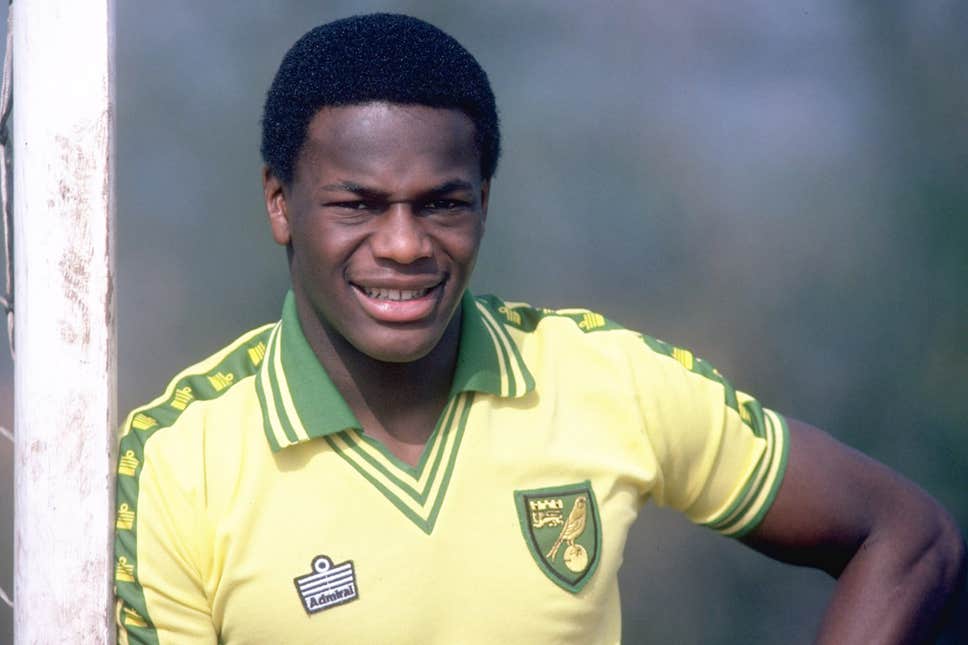Some athletes compete with the weight of the world on their shoulders. Danica Patrick had to fight against an entire system that was structured to keep people like her out.
Through her excellence and resilience, she was able to shatter the glass ceiling in car racing by continuing the legacy of women before her and opening up opportunities for future generations.
In a sport that only used attractive women as eye candy, Danica Patrick stood shoulder-to-shoulder with men and held the male gaze for almost a decade.
But her path wasn’t paved with rose petals. She had to prove her worth and shut up the naysayers, who continued to wag their mandibles even through her retirement.
This is the story of Danica Patrick: “The Hottest Thing on Wheels Since Roller Girl.”
Early life and go-carting success
Danica Sue Patrick was born in Beloit, Wisconsin, on March 25, 1982. Her parents were Beverly Ann and TJ Patrick Jr., who became her coach, engineer, and manager early in her career.
At a very early age, she started riding go-karts for fun with her younger sister, Brooke. However, a crash at the Sugar River Raceway was enough to convince Brooke that karting wasn’t for her.
So Danica continued racing alone.
Growing up, Danica Patrick admitted not having any female role models to look up to. She had to push herself to the limit through sheer willpower, which often led to crashes.
But she continued to hone the skills needed to compete. One thing stood out: Danica Patrick was never intimidated by racing with the boys.

By the time Patrick turned 15, she had already won several regional karting titles and the World Karting Association Grand National Championship.
These victories as an aspiring junior proved her raw talent and mettle and drew speculative interest from potential sponsors.
After featuring in a few TV programs, John Mecom Jr. decided to take the punt on her talents.
Danica Patrick as a junior racer
The pathway for mercurial talents in American sporting institutions usually goes from college to the pros. But when rare phenoms like LeBron James and Kobe Bryant enter the stage, they can go pro straight from high school.
For Danica Patrick, high school needed to take a back seat if she needed to hone her skills.
With her family’s blessing and the financial backing of new sponsors, Patrick moved to Milton Keynes, England.
During her three years of racing in England, she competed in Formula Vauxhall, where she finished 9th. She also competed at the Formula Ford Festival and finished second.

Although she didn’t pull up any trees initially, her performances improved subsequently, earning her a trial stint in Formula Three.
Subsequently, Danica Patrick returned to America bereft of notable silverware but loaded with valuable racing hours against other ultra-competitive juniors.
Danica Patrick raced around North America, including in the Barber Dodge Pro Series in Vancouver and the Toyota/Pro Celebrity Race at the Long Beach Grand Prix.
Her performances convinced Bobby Rahal, who signed her up for Team Rahal.
Patrick competed in a few events before becoming the first woman to race in the Toyota Atlantic Series since 1974. This is where she started making waves, becoming the first female driver to finish on the podium in Mexico.
Her talent and prowess were undeniable at this point.
So it was no surprise to racing enthusiasts when Rahul Letterman Racing added Danica Patrick to their roster for the 2005 IndyCar Series.
For fans and “casuals,” this was a monumental event for the Series, considering the limited historical representation of women in elite car racing.
Racing at IndyCar: The start of Danicamania
The year 2005 was the start of a mania that swept across the racing landscape.
Some fans believed Danica Patrick was only included as tokenism to fill a quota and be “eye candy” for the team. This set of fans never gave her a fair shake from the moment her car rolled out of the paddock.

On the other side of the coin were new fans who came to witness the Danicamania in full effect. Her races drew record crowds, and people queued to get a glimpse of the young sensation.
“It’s certainly easier to get people’s attention that way, but the thing is, in the back of people’s minds, there is always this thing, no girl has ever made it [really big in racing]. You have to set the world on fire with your driving. That’s what [potential sponsors] think before they sign that check.”
Danica Patrick’s debut was a let-down. She crashed and was hospitalized for a concussion. Quite predictably, this initial hurdle drew a few side eyes and reinforced the skepticism of unapologetic bigots.

After her recovery, she seemed to get into her stride with the rest of the field.
But everything changed at the Indianapolis 500.
Going into the weekend, Danica Patrick outpaced the entire field during practice. Her brilliance carried over to race day.
The world watched in awe as the 23-year-old female phenom led 19 laps and narrowly missed out on the top spot because she had to conserve fuel. She ended up in fourth.
Even though she didn’t finish on the podium, she became the first woman to lead laps and score a top-five finish in the historic race.
These brilliant performances earned Danica Patrick the 2005 Rookie of the Year award for the Indianapolis 500 and IndyCar Series.
Surviving in IndyCar
Over the next two years, Danica Patrick continued to place respectably in races across the circuit. She had multiple top-ten finishes, but nothing really remarkable happened until she joined Andretti Green Racing.
Then came that incident with Dan Wheldon. After a series of unsportsmanlike on-track maneuvers that cost Danica Patrick any chance of making the podium, she approached Dan Wheldon post-race.
Both got in each other’s faces, and a verbal sparring ensued. Wheldon, trying to walk away from Patrick, gave her a slight shove to the chest. She then responded by grabbing his left hand before walking away.
In the interview that followed, Danica Patrick told reporters: “He’s stubborn…and if he thinks I’m not gonna remember that? He’s crazy.”
This particular incident made the rounds online, igniting the ire of fans on both sides of the Danica Patrick hype train.
“My competitive spirit never allowed me to lay back and let anyone win. It still doesn’t. I hope it never will.”
The rest of the 2007 season was uneventful for Danica Patrick, who closed out the year with 424 points and multiple top-ten finishes.
At the 2008 IndyCar Japan 300, Danica Patrick was riding in fourth with three laps to go. Then, in a twist of cosmic justice that cost her the race in 2005, the three cars in front of her were forced to stop for fuel.

Danica Patrick took the lead and drove the car home to thundering applause and a media frenzy. She had broken the glass ceiling and become the first woman to win an open-wheel race in a major league in a North American Series.
This crowning moment continued Sarah Fisher’s legacy of being the first woman to lead a race from pole position.
Danicamania was in overdrive.
Unfortunately, her performance tanked from this moment. She struggled to reach such heights over the next couple of years. Eventually, she joined NASCAR.
Competing in NASCAR
Prior to joining NASCAR, Danica Patrick made her stock car racing debut at the 2010 ARCA Racing Series, finishing 6th. She also competed in the Nationwide Series. Her performances didn’t light up the track despite being in a capable car.
In 2012, Danica Patrick chose to race for JR Motorsports at the Sprint Cup Series. She also recorded 4 top-10 finishes in the Xfinity Series and was voted Xfinity Series’ Most Popular Driver.

More records followed Danica Patrick in 2013. At the 55th Daytona 500, Patrick became the first woman to win a Cup Series pole, finishing 8th place. This also made her the first woman to start the Cup Series since 1949.
For the next few years, Danica Patrick struggled to compete with the leaders. She always languished in the middle of the field and ended up in crashes.
The nerves were getting to her.

With her performances no longer living up to the hype and age catching up with her, Danica struggled in NASCAR. She also changed teams a few times in an attempt to rekindle that competitive spark.
But time remains undefeated in a young person’s sport.
On November 17, Patrick announced her retirement from full-time racing after the upcoming 2018 season. She also hinted at completing the “Danica Double” by competing in the 2018 Daytona 500 and Indianapolis 500.

In a curtain call that encapsulates the dying embers of her stardom, she finished in the top ten ones and accrued eleven DNFs (did not finish).
Despite not winning any races in NASCAR, he left a lasting legacy on and off the track.
Beyond the track
Today, detractors try to denigrate Danica Patrick’s impact on the sport and on women.
The term that fits her perfectly is “Kournikova on wheels.”
Both Anna Kournikova and Danica Patrick embraced their femininity to become the faces of their respective sports despite not being the top talents. Some went as far as to claim that her petite build (45kg) was an advantage over other drivers.
Even her fellow drivers fanned the flames of criticism. Kyle Petty said that Danica Patrick “was not a race driver but a marketing machine”.
Such tasteless remarks egged on misogynistic fans who cloaked their criticism as fair and objective.

Regardless, Danica Patrick had a vibrant and vocal fan base that made sure she won the title of the Most Popular Driver in the IndyCar Series from 2005 to 2010.
She also won the Kids’ Choice Award for Favorite Female Athlete in 2008, 2012, and 2013. She became the first woman to host the ESPYs.
By 2017, Danica Patrick had already made 14 appearances in Super Bowl commercials. She also made a cameo in Jay-Z’s “Show Me What You Got”.
Jigga tapped @FGaryGray to direct the "Show Me What You Got" video with cameos from Danica Patrick and Dale Earnhardt, Jr pic.twitter.com/IRsFyIKzMs
— Complex Music (@ComplexMusic) November 21, 2016
Her partnership with GoDaddy also embodies her brand. The green car with the large GoDaddy logo was always one to watch at every race.
Through it all, she never shied away from her femininity, becoming No. 25 on the Maxim Hot 100 and posing for the Sports Illustrated swimsuit issue twice.

Although she has aligned herself with a section of the podcasting world with questionable views, this doesn’t diminish her impact on the race track.
Danica Patrick is a true racing and sporting pioneer for women, similar in impact to Kathrine Switzer and Flo Jo. And as the years roll by, we’ll see more women racers who grew up with massive posters of Danica Patrick on their walls.
Who wrote this?
Ugo is a sports enthusiast with an undying love for underdog stories.























